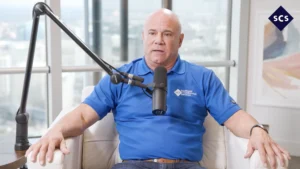Marking the Territory—Presco’s Role in the Invisible Pet Fence Industry
The growth in pet purchases over the pandemic caused an increased need for solutions to keep those pets safe. And, with traditional fencing not always within budget or visually aligned with the neighborhood, people have turned to invisible fences in increasing numbers.
To discuss how these solutions get implemented and share insights into what pet owners need to know, Scott Bollinger, a National Account Manager with Presco, stopped by the Marking Minute to fill host Daniel Litwin in on all the details.
According to Bollinger, the setup and installation costs for an invisible fence are much lower than a traditional wood fence or similar fencing system.
“And then, of course, there’s the aesthetic appeal of it,” Bollinger said. “Not everybody wants to look out at their backyard and look at a wooden fence or metal fence. Some of the neighborhoods don’t want it. So, for a lot of people, it’s a very practical solution.”
The most important question people tend to have regarding an invisible fence is the installation, Bollinger said. And there are many invisible fence installation companies throughout the country people can use. “The other option is to do it yourself. As long as you’re willing to dig the trench around your property, it’s very doable.”
So, how does Presco integrate into invisible fencing solutions? The answer – marking flags.
“The flags are a really important part of (the fencing system),” Bollinger said. “For the first couple of months, they let the dogs and the humans know exactly where the perimeter is, and they need to see that. You have to have that visual of the flags in order to do the important training steps.”
Follow us on social media for the latest updates in B2B!
Twitter – @MarketScale
Facebook – facebook.com/marketscale
LinkedIn – linkedin.com/company/marketscale








